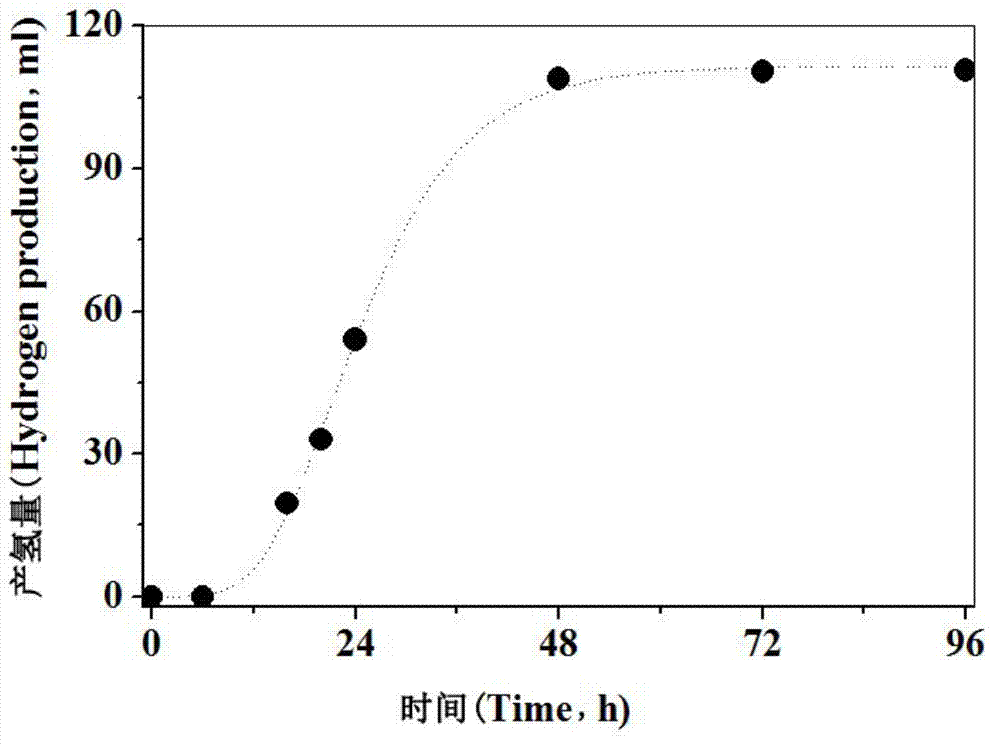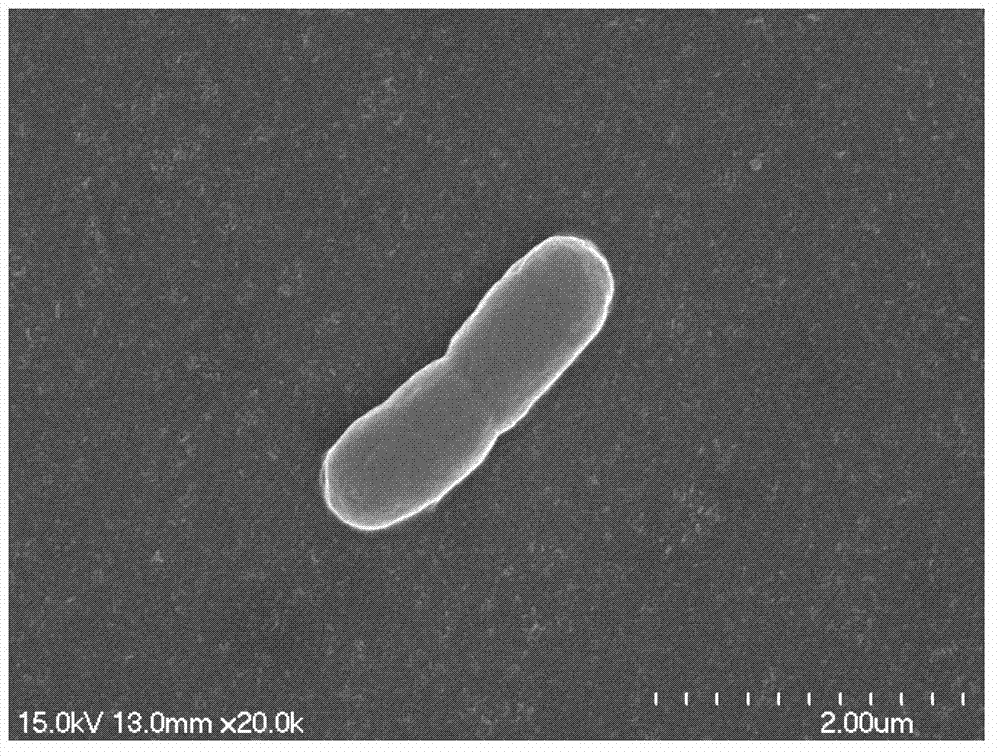Acid-producing klebsiella oxytoca MOW-02-05, selection method and application of acid-producing klebsiella oxytoca MOW-02-05
A technology of Klebsiella and strains, applied in the field of Klebsiella oxytoca MOW-02-05 and its screening, can solve the problems of difficult biodegradation and purification treatment of dye wastewater, and achieve a wide range of practical application prospects , the effect of good decolorization ability
- Summary
- Abstract
- Description
- Claims
- Application Information
AI Technical Summary
Problems solved by technology
Method used
Image
Examples
Embodiment 1
[0063] The screening of embodiment 1 thalline
[0064] 1) When the intermittent anaerobic sludge reactor stops intermittently, take 1ml of the bottom sludge from the reactor; 2) Add it to a serum bottle filled with nitrogen and filled with 100ml of screening medium, set the temperature at 35°C and the speed at Shake on a 120rpm shaker until the liquid in the serum bottle is colorless; 3) Take 1ml of the bacterial solution in the serum bottle at this time, and repeat step 2 to obtain the bacterial solution after screening 5 times; 4) Take 1ml of the bacterial solution that has been screened 5 times solution, diluted 5,000 times with sterile water, and spread on a solid LB medium plate, and obtained a single strain by streaking the plate; 5) Pick a single strain on the plate medium with an inoculation loop, and insert it into LB Grow aerobically in the liquid medium for 8 hours, centrifuge, and collect the bacteria; 6) Collect the collected bacteria, repeat step 2, and use visua...
Embodiment 2
[0067] The cultivation of embodiment 2 thalline
[0068]Use an inoculation loop to pick up the bacterial strain Klebsiella oxytocaMOW-02-05 on the activated plate medium and transfer it to the Erlenmeyer flask containing the strain activation medium, and shake it for 8 hours in a shaker with a set temperature of 35°C and a rotational speed of 180rpm , the obtained cells were centrifuged (8,000g) for 20 minutes, the cells were washed with phosphate buffered saline, and centrifuged again, repeated 3 times to obtain milky white pollution-free strain cells.
[0069] As mentioned above, the composition of the medium for cultivating the strain is: 10 g of peptone, 5 g of yeast extract, 10 g of sodium chloride, adding water to 1 L, pH7.
Embodiment 3
[0070] Embodiment 3 thalline morphology observation
[0071] Light Microscopic Observation of Bacteria
[0072] The bacteria were collected according to the method of Example 2, and the bacteria were fixed by a conventional flame fixation method, and then placed under an optical microscope for staining experiment observation.
[0073] Scanning Electron Microscopy (SEM) Observation of Bacteria
[0074] Collect the thalli according to the method of Example 2, wash three times with 50mM phosphate buffered saline (PBS), then fix overnight with 2.5% glutaraldehyde, then wash three times with PBS, finally dehydrate with ethanol successively, vacuum-dry to make sample, Observed by SEM after spraying gold.
PUM
 Login to View More
Login to View More Abstract
Description
Claims
Application Information
 Login to View More
Login to View More - R&D
- Intellectual Property
- Life Sciences
- Materials
- Tech Scout
- Unparalleled Data Quality
- Higher Quality Content
- 60% Fewer Hallucinations
Browse by: Latest US Patents, China's latest patents, Technical Efficacy Thesaurus, Application Domain, Technology Topic, Popular Technical Reports.
© 2025 PatSnap. All rights reserved.Legal|Privacy policy|Modern Slavery Act Transparency Statement|Sitemap|About US| Contact US: help@patsnap.com



